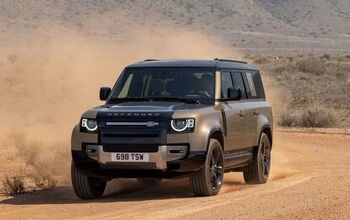Study: 2025 54.5 MPG CAFE Target Within Reach
Per a new study by the Consumer Federation of America, U.S. average new-car fuel efficiency is well on its way to hitting the 54.5-mpg target set for 2025.
The study looked over 1,163 new models, finding those rated at 23 mpg and above by the EPA gained a couple of percentage points between 2014 and 2015, rising from 50.5 percent to 52 percent of overall new-car sales, Edmunds reports. Meanwhile, those averaging 16 mpg and below declined from 8.5 percent of sales last year, to 6.1 percent this year.
Taking the 2015 podium for complying with the fuel economy standards among their fleets, Honda held onto its gold with 57 percent over 2014’s 51 percent, while Volvo jumped from having no models in compliance to 29 percent. Mercedes took home the bronze by increasing fleet compliance to 18 percent of its models, compared to 12 percent last year.
On the other end, the CFA found a few automakers lost their footing in compliance, with Kia and Subaru making the biggest drops (18 percent and 48 percent respectively in 2015, 40 percent and 75 percent in 2014), and General Motors falling eight percentage points to 19 percent.
The group notes this is due to a boom in new truck and SUV sales, which made up half of all new-vehicle sales for the 2015 model year. Overall compliance remained stable (53 percent this year compared to 58 percent last year), while compliance rates among trucks and SUVs fell from 80 percent to 35 percent.
Despite the few stumbling blocks, CFA’s automotive expert, Jack Gillis, says the industry can achieve the 2025 CAFE target, a standards representing “a historic consensus that brought together automakers, labor unions, consumer organizations and environmental groups to benefit our national and economic security, the environment and consumers through reduced fuel consumption and more vehicle choices.”
[Image credit: WhiteHouse.gov]
Seattle-based writer, blogger, and photographer for many a publication. Born in Louisville. Raised in Kansas. Where I lay my head is home.
More by Cameron Aubernon
Latest Car Reviews
Read moreLatest Product Reviews
Read moreRecent Comments
- 28-Cars-Later Mileage of 29/32/30 is pretty pitiful given the price point and powertrain sorcery to be a "hybrid". What exactly is this supposed to be?
- MRF 95 T-Bird I own a 2018 Challenger GT awd in the same slate gray color. Paid $28k for it in late 2019 as a leftover on the lot. It’s probably worth $23k today which is roughly what this 2015 RT should be going for.
- Mike978 There is trouble recruiting police because they know they won’t get support from local (Democratic) mayors if the arrests are on favored groups.
- FreedMike I'm sure that someone in the U.S. commerce department during the 1950s said, "you know, that whole computer thing is gonna be big, and some country is going to cash in...might as well be us. How do we kick start this?" Thus began billions of taxpayer dollars being spent to develop computers, and then the Internet. And - voila! - now we have a world-leading computer industry that's generated untold trillions of dollars of value for the the good old US of A. Would "the market" have eventually developed it? Of course. The question is how much later it would have done so and how much lead time (and capital) we would have ceded to other countries. We can do the same for alternative energy, electric vehicles, and fusion power. That stuff is all coming, it's going to be huge, and someone's gonna cash in. If it's not us, you can damn well bet it'll be China or the EU (and don't count out India). If that's not what you want, then stop grumbling about the big bad gubmint spending money on all that stuff (and no doubt doing said grumbling on the computer and the Internet that were developed in the first place because the big bad gubmint spent money to develop them).
- MRF 95 T-Bird The proportions of the 500/Taurus-Montego/Sable were a bit taller, akin to 1940’s-50’s cars in order to cater to crossover buyers as well as older drivers who tend to like to sit a tad higher.


































Comments
Join the conversation
The only way a 54.5 MPG average is happening is if everyone starts riding motorcycles and driving late-80s Japanese kei cars with modern engines swapped into them. Otherwise, it's a pipe (as in bong) dream.
Not mentioned in all the comments is what will the death and injury rate be when we all drive tiny micro cars? Will the increased MPG be worth the loss of life? Will Obama take credit for the slaughter?